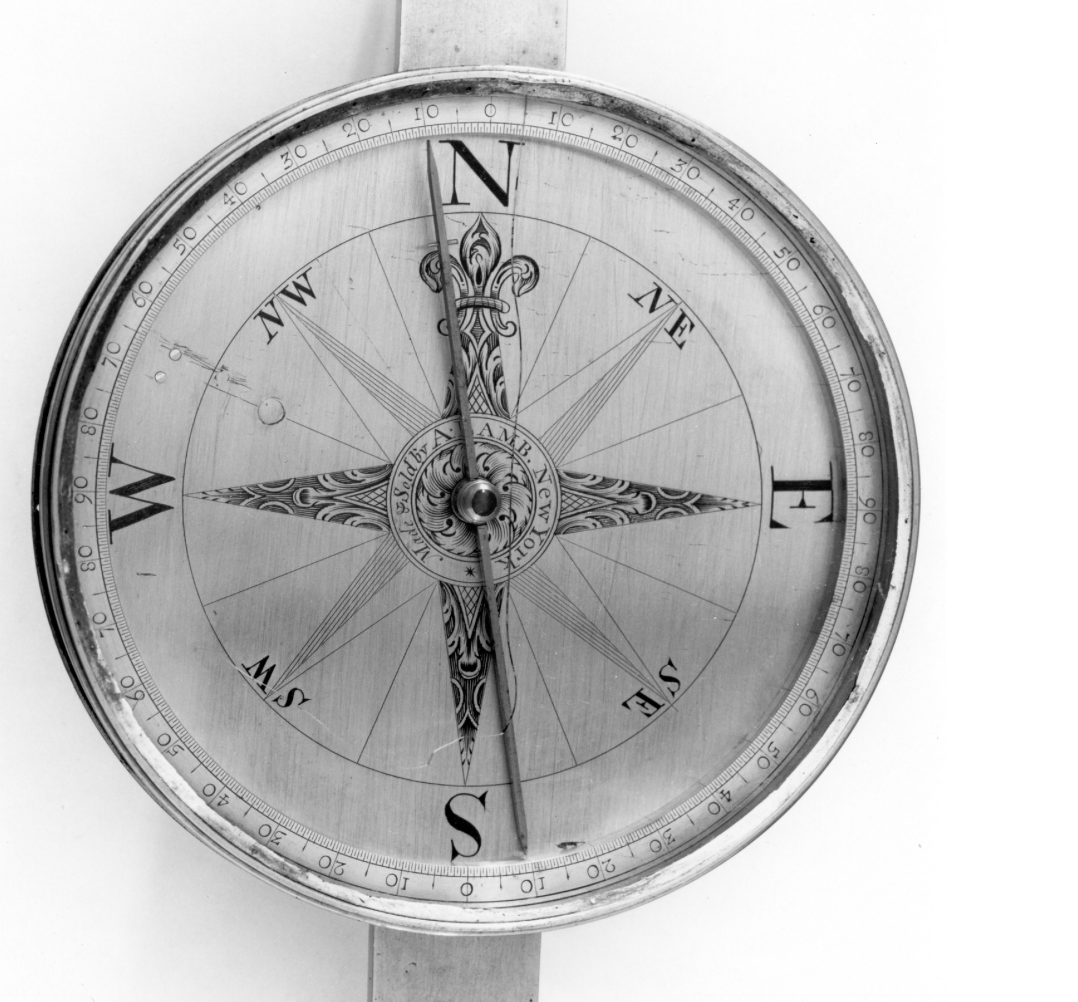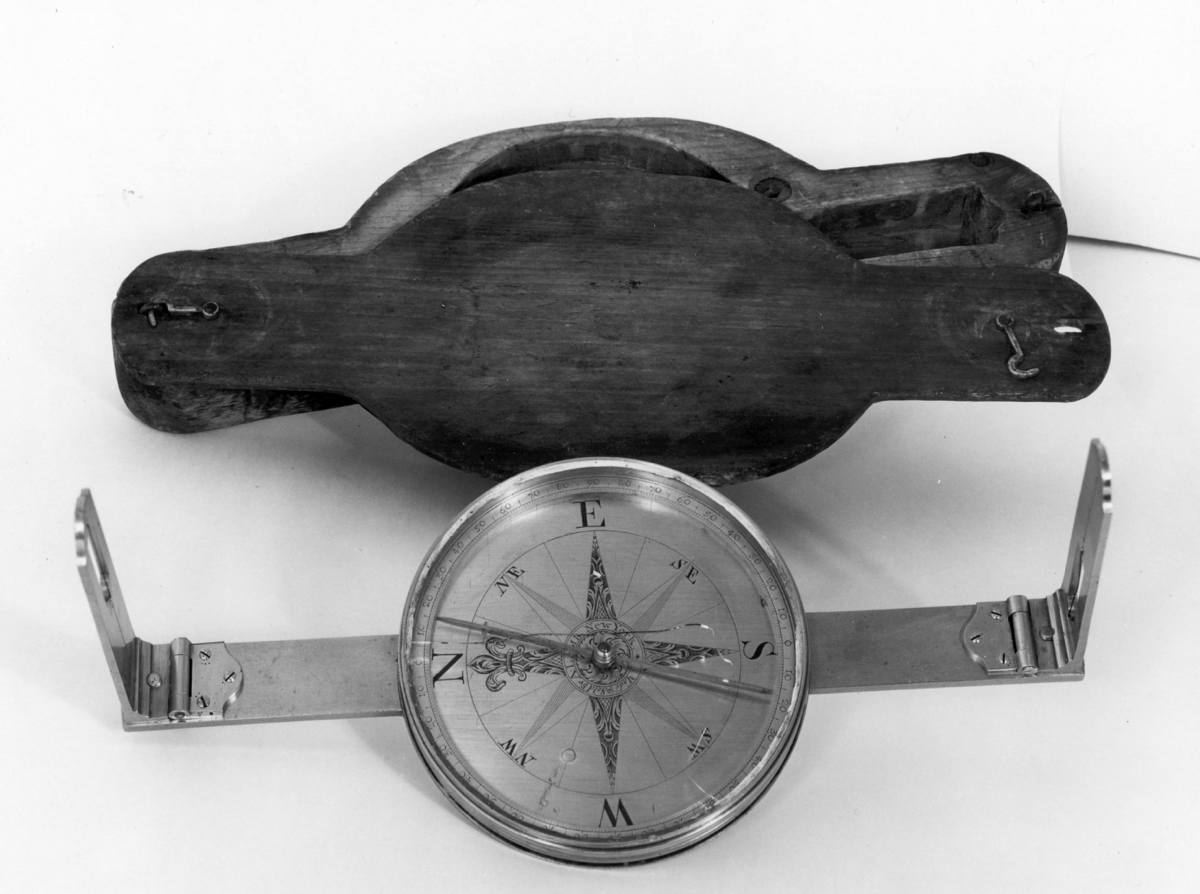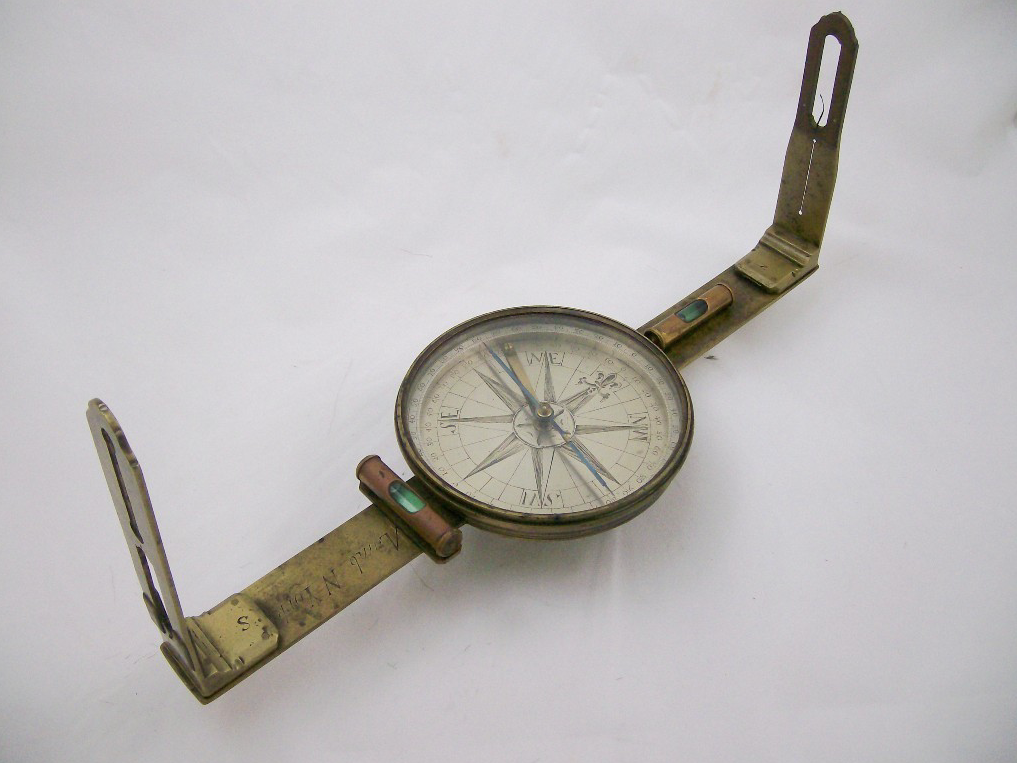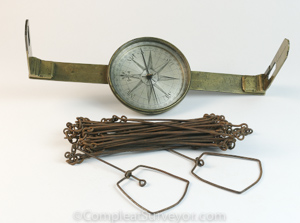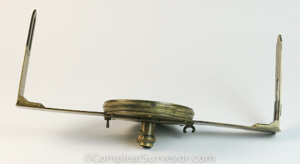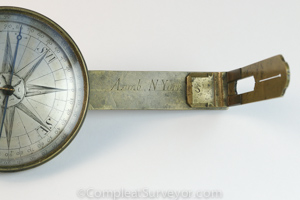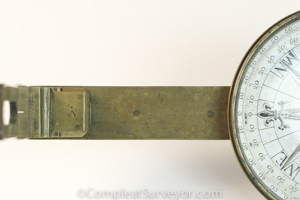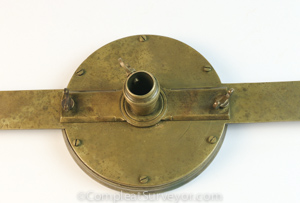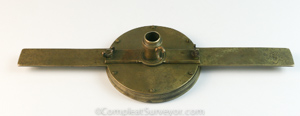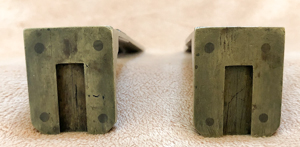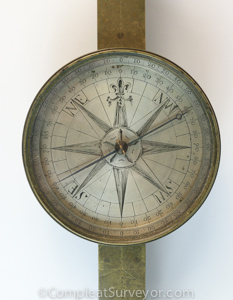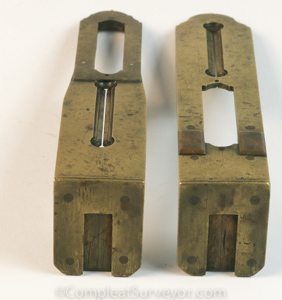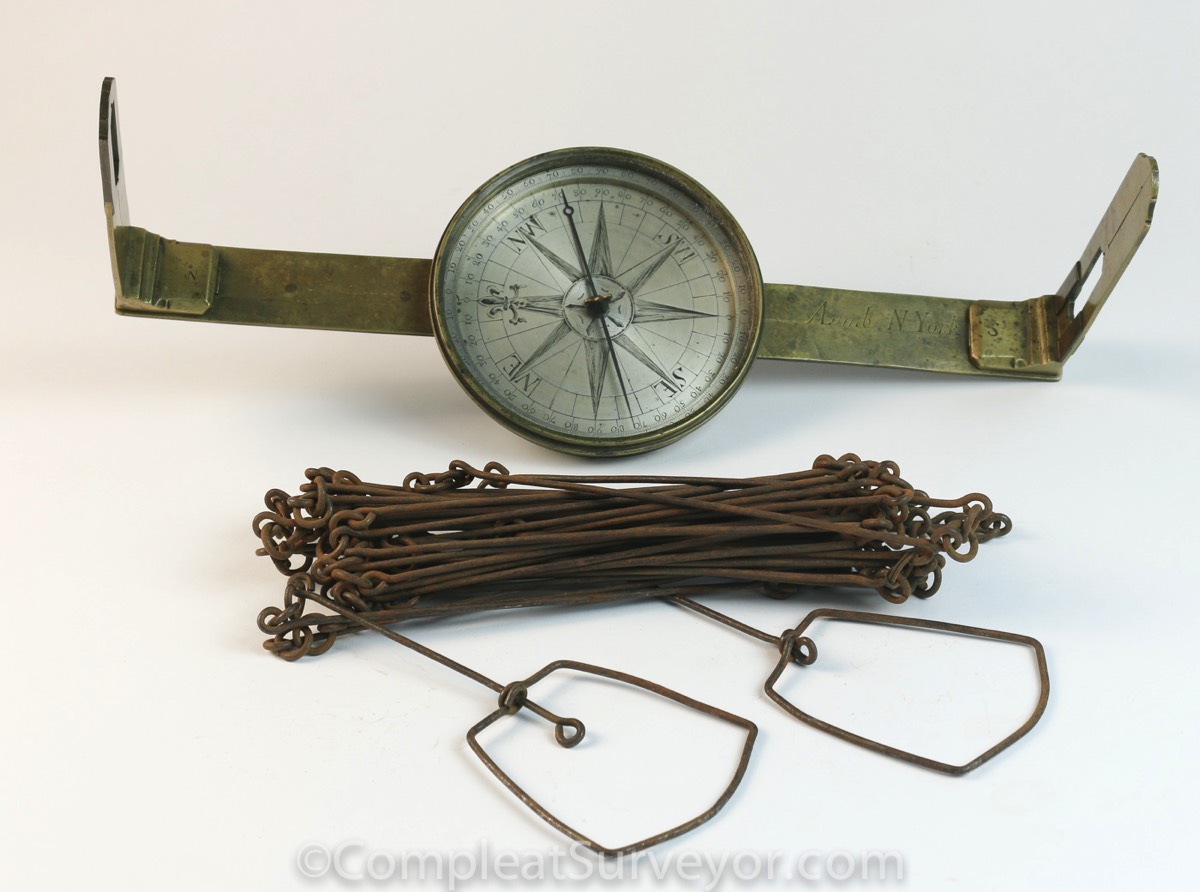
Circa 1730-1740 Anthony Lamb Compass
Perhaps the Oldest Surviving Brass Surveying Compass Made in America
Anthony Lamb made this compass in New York, likely in the 1730 to 1740 time frame. This appears to be a very early compass made by the first English trained instrument maker to immigrate to America.
The story of Anthony Lamb is extremely well documented. Anthony was the most famous instrument maker in colonial New York (according to Smart, who authored The Makers of Surveying Instruments in America Since 1700), and Anthony's son John Lamb was a revolutionary war General for the Americans. So the doings of the Lamb family attracted attention.
Silvio Bedini published a book about Anthony Lamb, "At the Sign of the Compass and Quadrant - The Life and Times of Anthony Lamb". The book details Anthony's fascinating life. Anthony started out pointed in the right direction - born in England in 1703 and later apprenticed to Henry Carter, an English mathematical instrument maker. But young Anthony fell under the influence of a notorious criminal, Jack Sheppard, and help Sheppard rob a friend and tenant of Anthony's master, Henry Carter. The crime unraveled, however, and the police rounded up all involved, including Jack Sheppard and Anthony Lamb. The court ordered Sheppard to be hung, but was more lenient with the 21 year old Anthony Lamb. Lamb basically opted to forgo all punishment by agreeing to immigrate to America.
Anthony's trip to America in 1724 sounds horrific. He came to America in a prison ship, where a meaningful percentage of prisoners failed to survive the journey. Once in America, the next six years are a bit of a mystery. Anthony likely worked as skilled servant or craftsman in Maryland or Virginia. Anthony relocated to New York in 1730, and set up a mathematical instrument business after arriving in NY. Anthony started advertising his mathematical instrument business in Ben Franklin's Pennsylvania Gazette in late 1730:
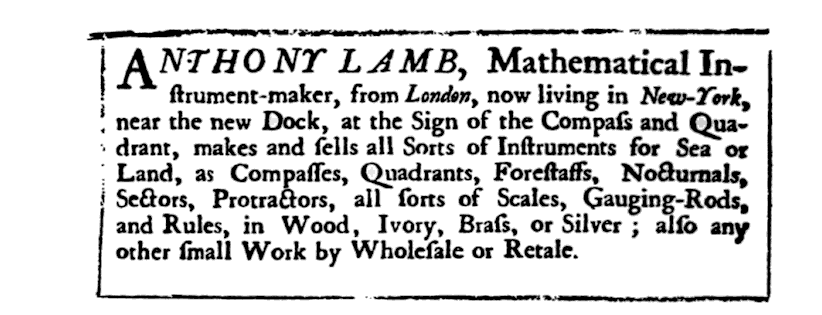
Anthony's son, John Lamb, joined Anthony's instrument business in 1750 but left the business in 1760. There is an "A. Lamb & Son" compass in a NJ museum as of 1962 according to Smart's book.
Smart said about Anthony - "He was the most noted instrument maker in New York City during his lifetime."
Only a handful of Anthony Lamb instruments have survived the test of time.
I believe the instrument offered here, which is 14.5 inches long with a 4.5 inch needle, is a very early example of a compass made by Anthony Lamb. I date the instrument circa 1730 to 1740. Frankly, I believe the instrument is much closer to 1730 than 1740. First, look at the compass dial in the pic featured at the top of this webpage. You will see two sets of 360 degree readings - the upper elevated ring and the lower inner ring. That design is VERY English - most of the English instrument makers used that approach, whereas American instrument just had a single 360 degree ring. Since Anthony Lamb was trained in England, it's not surprising at all that he used the English approach when it came to the compass dial.
Second, look at the close-up shots of the compass dial at the bottom of this webpage. You will see workmanship lacking in high quality. Note especially the fact that the upper and lower 360 degree rings don't match up consistently. Anthony was close to a degree off in some places between the upper and lower ring. This compass just doesn't look like it was made by a master craftsman.
Compare the compass offered here to the compass made by Anthony Lamb that resides in the Smithsonian (a circa 1750s compass according to the Smithsonian):
The Smithsonian example looks like it was made by a master craftsman - note the extremely high quality. Also note that Anthony had adopted the colonial standard of only one 360 degree ring at some point.
If you scour the internet you will find another Another Lamb compass - a compass much like the one offered here was offered on ebay according to this site. The ebay compass has more features - 2 levels for example. That compass is actually the same compass I am offering here. According to a prior owner, the levels and needle on that compass were added to the compass mid 19th century. The prior owner hired noted compass restorer Jeff Lock to remove the bubbles and replace the needle with a more original looking piece.
The Lamb compass offered here has another fascinating feature - East & West are reversed on the compass face. This reversal of course eventually became standard on American surveying instruments. I have seen articles claiming that David Rittenhouse created the reversal (see, for example, https://www.pobonline.com/articles/87805-web-exclusive-musing-about-the-museum), but that cannot possibly be correct. The Lamb compass offered here was made between 1730 to 1740, while David Rittenhouse was born in 1732. This compass disproves any possibility that David Rittenhouse was responsible for reversing east and west on surveyor's compasses.
Anthony Lamb was not a surveyor, and likely did not come up with the idea of reversing east and west himself. I suspect the reversing of east - west was an English or Irish development, and Lamb brought that approach with him to America. Nevertheless, I have not been able to find a compass with east - west reversed that pre-dates the Lamb compass offered here.
Everything that I have seen suggests that Anthony Lamb was among the first, if not the first, to make brass compasses in America. I haven't seen any brass compass that can be confirmed as being made before 1730. (Jeffrey Lock refers to a signed 1733 brass compass in an article on his website and provides a pic of a very small part of the compass dial, but Lock doesn't identify the maker or provide any other meaningful information about the compass). Assuming all of this is true, either the compass offered here or the 1733 compass referred to in the Lock article is very likely the oldest surviving brass compass made in America. While it is impossible to state for sure which is the oldest surviving compass, the compass offered here is a very significant surveying instrument, and comes with an incredibly documented story about the maker. This compass, along with the story behind it, is worthy of display anywhere, be it in a museum or home-office. As you examine the pics below, note that both sight vanes show evidence of long-ago repairs that were competently done, and do not detract from the patina of the compass. The compass arms also seem slightly bent to my eye, but its barely noticeable to me.
Included in the sale is an original edition of Bedini's book on Anthony Lamb.
SOLD - Email Russ
© 2020 Russ Uzes/Contact Me
